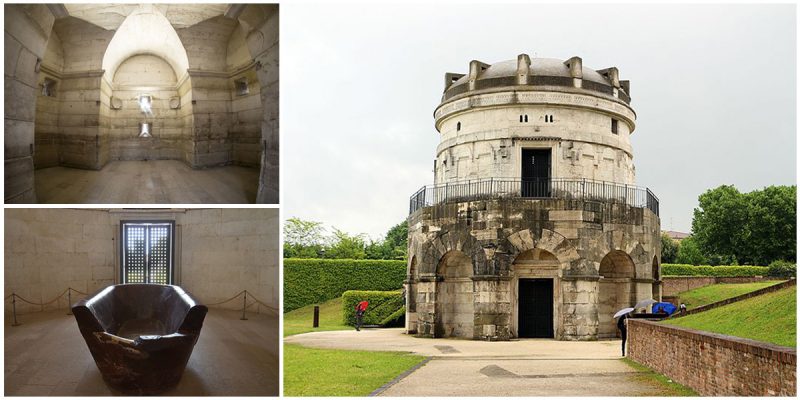The Mausoleum of Theoderic, built by the Arian Ostrogothic emperor Theoderic in 520 AD as his future tomb, is an ancient monument just outside Ravenna, Italy, a town famous for its early Christian monuments and Byzantine mosaics.
It is built using enormous blocks of stone from Istria and is divided into two decagonal sections, one above the other.
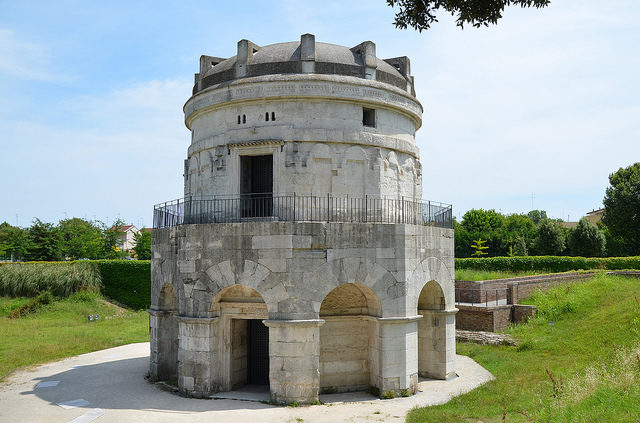
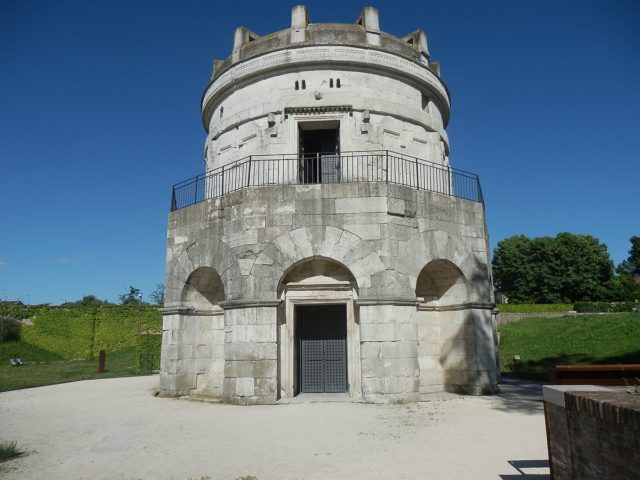
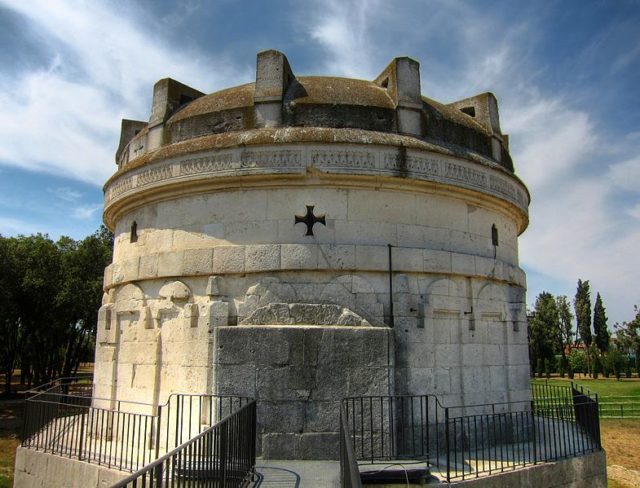
Roofed by a large monolithic dome (commissioned by Theodoric himself as a symbol of power) with twelve square arches bearing the names of the eight Apostles and four Evangelists, this giant structure, measuring 10 meters in diameter and weighing around 230 tons, is probably one of the greatest monoliths in the world to be used as a cupola.
It still remains unclear how this 230 ton stone was transported from Istria or lifted onto the top of the building.
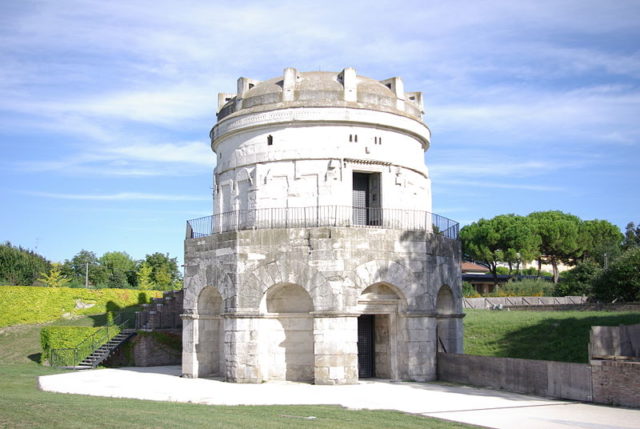
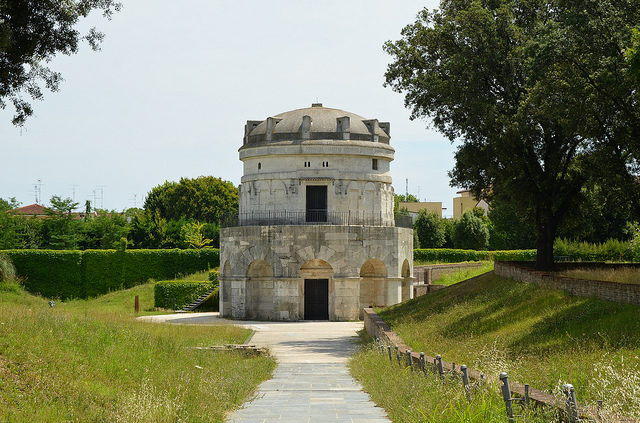
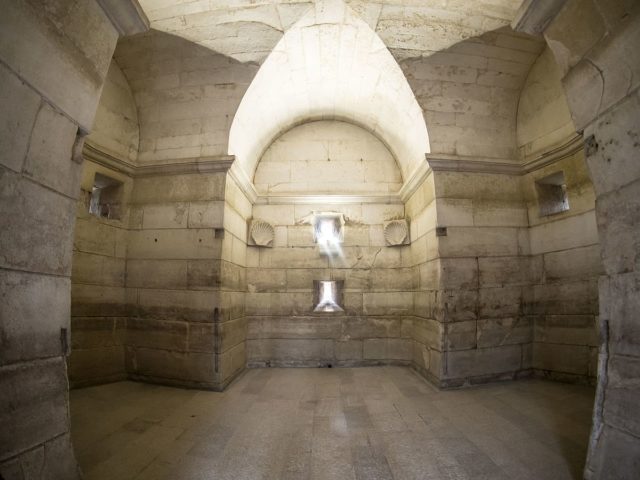
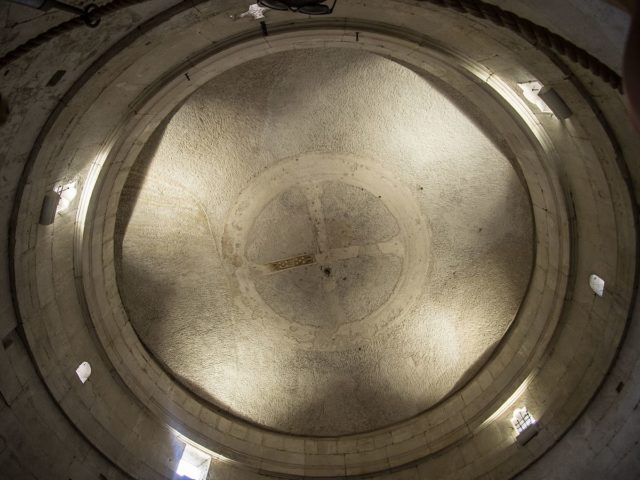
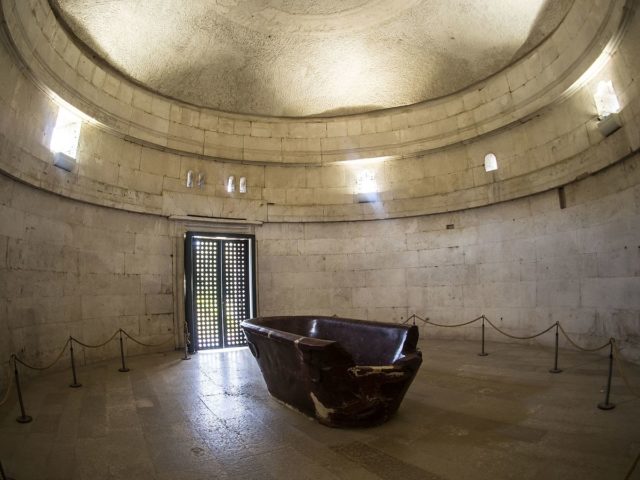
A niche leads down to a room, probably a former cruciform-plan chapel used for religious services and an external staircase leads to the upper floor. Located in the center of the floor is a circular porphyry stone grave in which Theoderic was eventually buried.
However, his remains were removed from the Mausoleum in AD 561 during the Byzantine domination. Over time, the mausoleum was left to decline and incorporated in other buildings. It subsequently became an oratory and also served as a lighthouse.
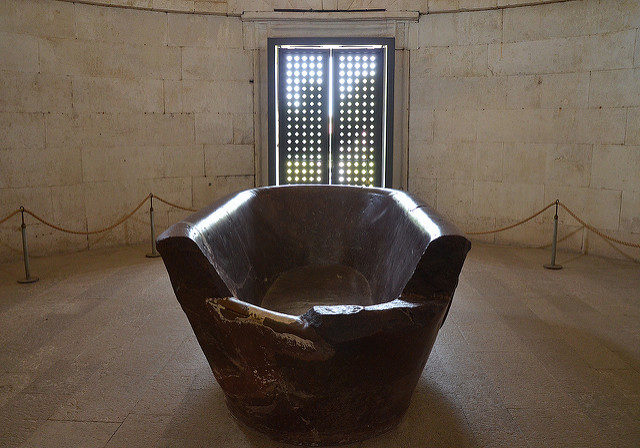
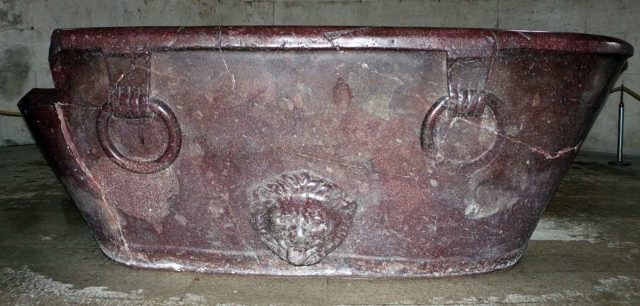
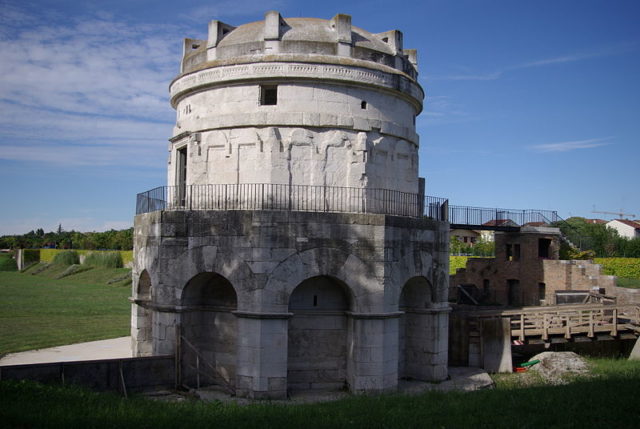
The legend says that the great Gothic king Theodoric predicted that he would die from a lightning strike. To avoid this fate, the king ordered the construction of a place where he could seek refuge on rainy days: a place protected and indestructible, covered by a dome so powerful that it would never be destroyed.
But the prophecy came true and one stormy night a lightning bolt struck the dome while Theodoric was still inside.It is one of eight sites in Ravenna inscribed on the UNESCO World Cultural Heritage list.
